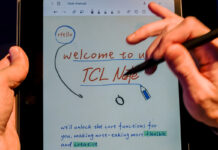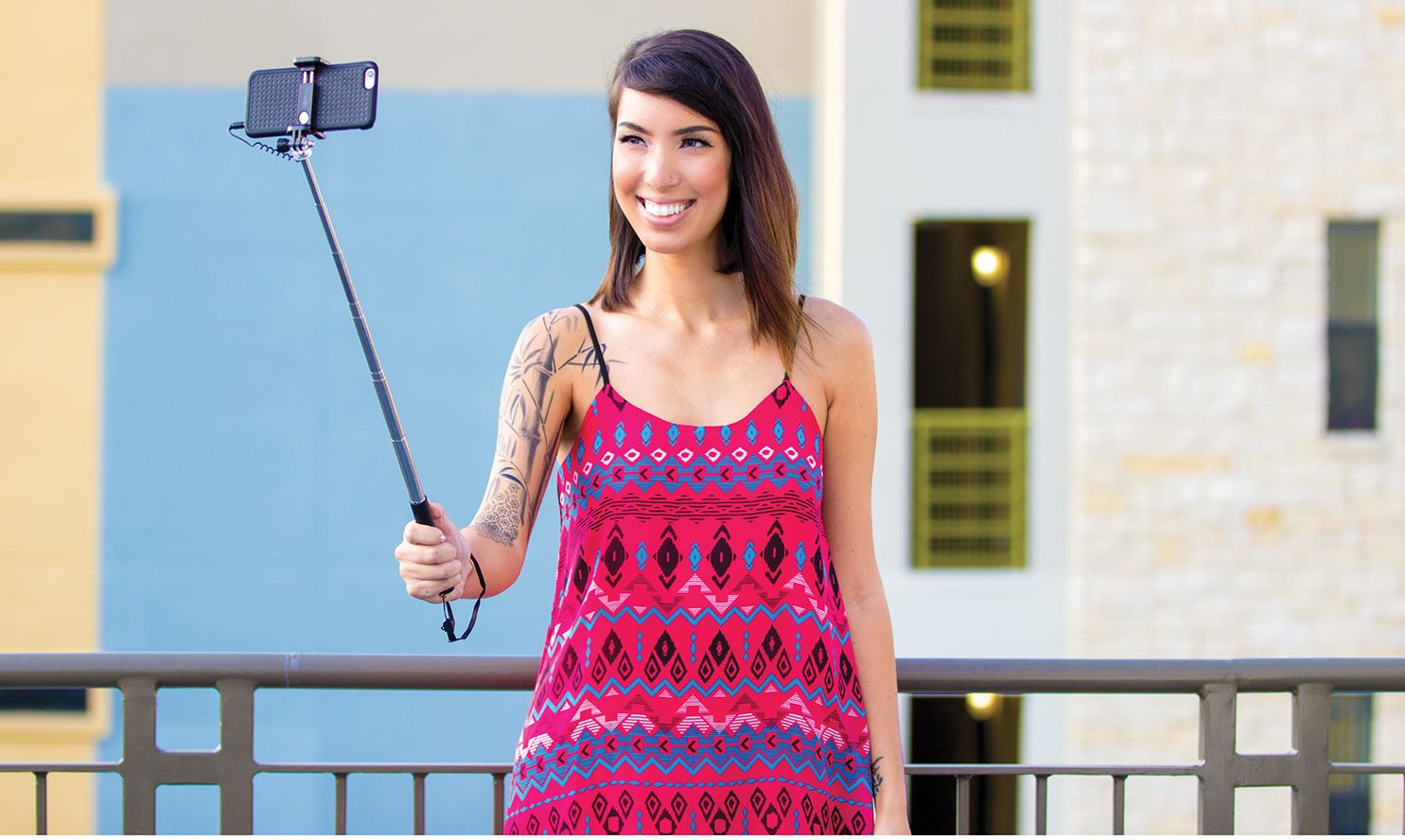 The 2010s are the decade of the selfie. Or… no, that’s not quite true. Today may be the heyday of the selfie, but the movement started way back in the Paris Hilton days, with flip phones and 2MP cameras and limited MMS texting.
The 2010s are the decade of the selfie. Or… no, that’s not quite true. Today may be the heyday of the selfie, but the movement started way back in the Paris Hilton days, with flip phones and 2MP cameras and limited MMS texting.
I know what you’re thinking. Selfies; what a waste of time! What a terrible scourge upon society!
Okay, so maybe no one was thinking exactly that, but selfies are actually pretty awesome. They take the irresistible urge to share, and they add to it the yearning to remember each moment. In fact, the first light picture ever taken was a selfie (thanks, Robert Cornelius), and it dates all the way back to 1839!
Fast forward to today. Not only can we take selfies at the drop of a hat, but we can take them as if we were standing two feet away, too. (All the better to capture the breadth of the moment with!) With the help of a selfie stick, you get a wider frame than you could ever manage with just your wobbly little arms, and they’re incredibly easy to set up and use.
How selfie sticks help make the most of your smartphone camera
Selfie sticks are slowly becoming less relevant as time passes, if you ask me, but technology hasn’t quite advanced beyond them yet. Let me explain: as smartphones get larger (and are offered increasingly in plus sizes, like the Google Pixel 2 XL or the iPhone 8 Plus), people are looking to see more in the frame when they take photos. As a result, these teeny-tiny cameras are getting wider and wider. New smartphones offer telephoto and wide-angle lenses, which means that you don’t need a selfie stick to fit more into the frame as compared to your old camera – but you do still need one to fit you, your five best friends, and a national monument into the shot.
What a selfie stick will do is help you fit more into a photo or video. On top of that, it’ll give you distance from that super-wide-angle lens, minimizing distortion (and maximizing the quality of your selfie.) 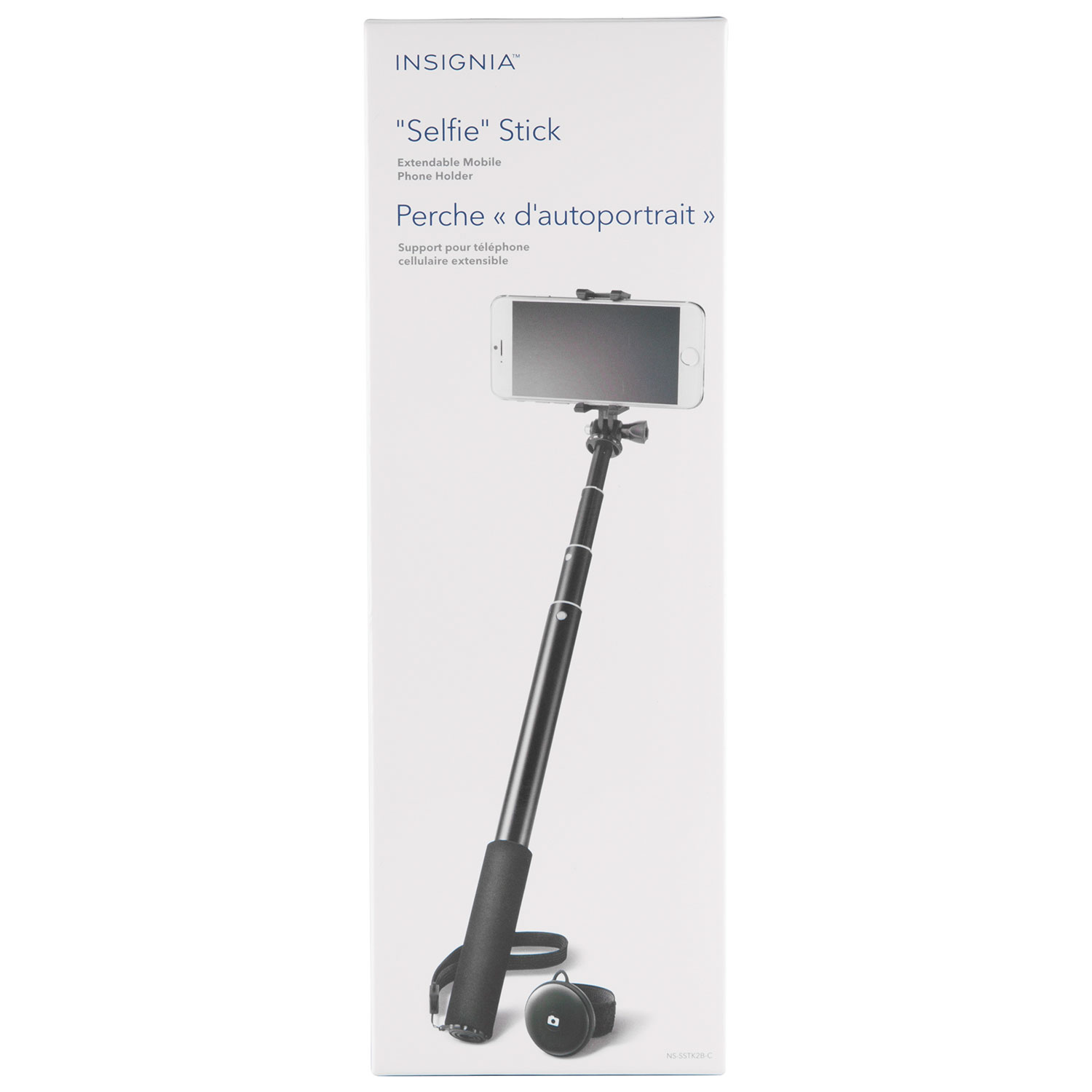
Want to experience the stretch of a wide-angle lens and a tiny digital sensor? It’s easy! Take a photo of your face in the centre of your smartphone screen. Then, take a photo of your face in the bottom corner of your smartphone screen. You’ll notice that your face gets a little distorted – you’ll probably end up with a really long, lopsided jaw, or an arm that looks like it goes on for days. Smartphones are fitting more and more into each shot without a selfie stick, but they’re not quite there yet: you’ll still need a stick to get a good amount of distance in there.
How to set up a selfie stick
For a basic selfie stick like the Insignia Selfie Stick, you simply flip your phone to its front-facing camera, clip your Android or iOS smartphone into the selfie stick holder, and get ready to take your shot.
The Insignia Selfie Stick is super stripped-down. A button (which slides around your finger like a ring) triggers your camera after pairing, letting you hold your phone up to a metre away before you take the shot. If that button gets lost, or you don’t have the hands for it, here’s another option: a good ‘ol self timer. Set it for 2 or 10 seconds (on an iPhone; Androids may be more customizable), then position and snap away!
How to set up an in-line selfie stick with Bluetooth
For something more streamlined, there are also selfie sticks like the ReTrak Bluetooth Selfie Stick Monopod. It’s compatible with iOS, Android, and the GoPro HERO.
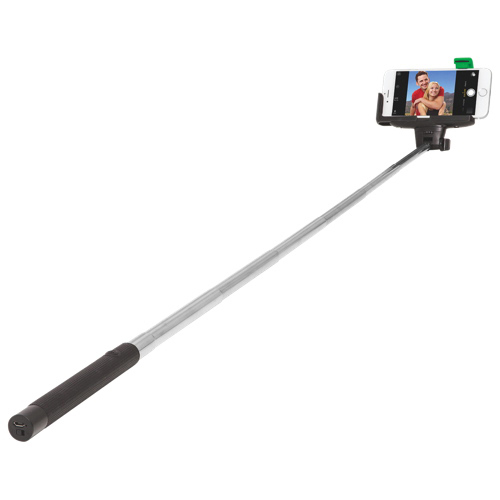 To set up a Bluetooth selfie stick, pair the device with your selfie stick first and switch your camera to selfie mode. Then, once you’ve turned on your Bluetooth and selected the selfie stick from your device menu, just pop your phone into holder at the end of the stick and tweak it for your best angle!
To set up a Bluetooth selfie stick, pair the device with your selfie stick first and switch your camera to selfie mode. Then, once you’ve turned on your Bluetooth and selected the selfie stick from your device menu, just pop your phone into holder at the end of the stick and tweak it for your best angle!
The button in a Bluetooth-equipped selfie stick handle (like the separate ring for the Insignia) is paired with your smartphone to trigger a shutter response, so you don’t need to be physically wired in, and nothing needs to touch the screen. Just click and go–but make sure your selfie stick is charged up before heading on vacation! Selfie sticks like this one use very little energy, so batteries can last an entire trip without needing to be recharged.
Using a gimbal stabilizer instead of a selfie stick
As mobile photography and videography become more popular, technology advances. I tried my first mobile gimbal stabilizer last year. Because I don’t do a lot of video, I didn’t find myself reaching for it often – but these stabilizers need a mention here!
While a stabilizer like the DJI Osmo Mobile 2 looks a lot like a selfie stick, it’s quite different. For starters, the handle on a gimbal isn’t retractable. It’s enough to give you a firm grip, but this isn’t a product that’s designed for distance.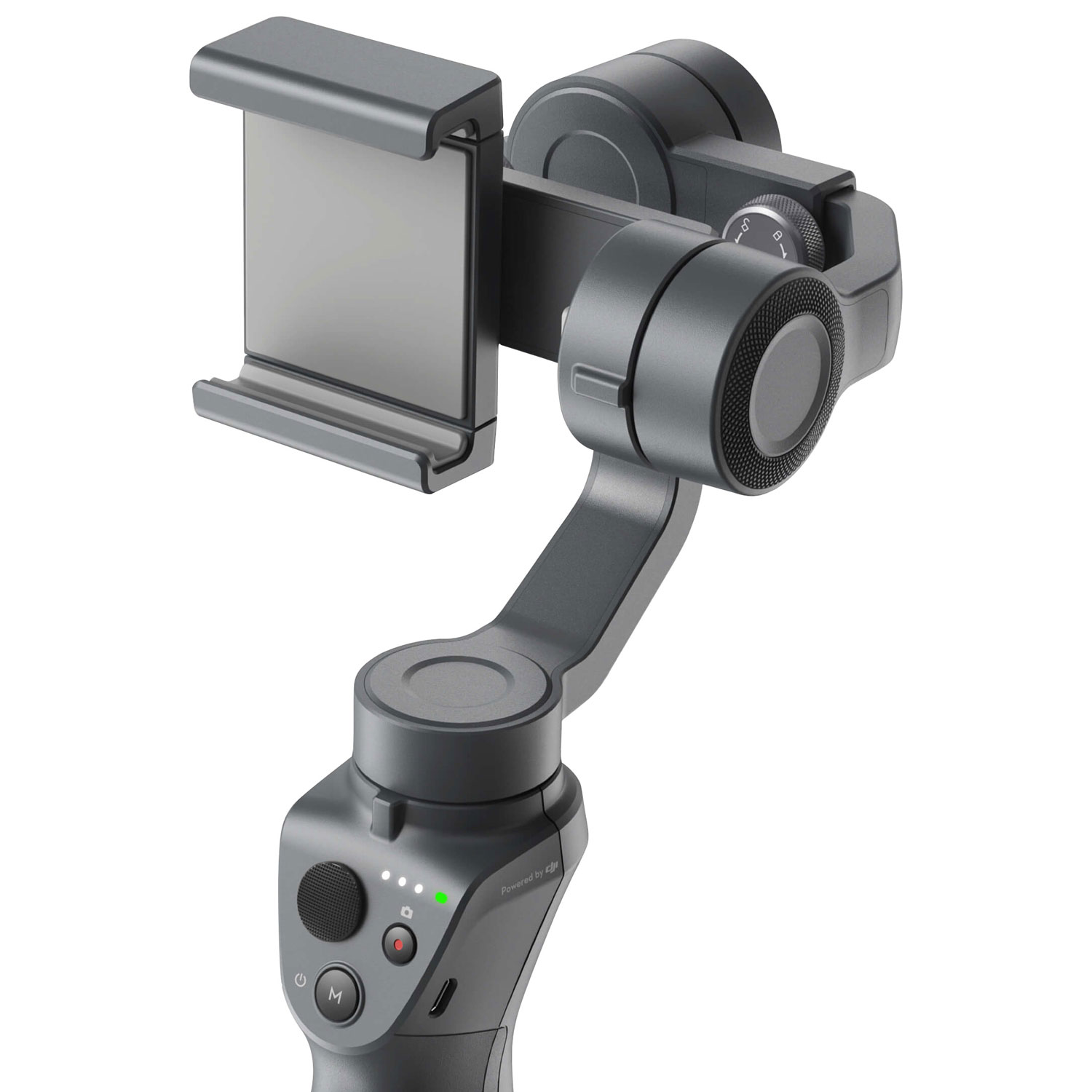
Instead, mobile gimbal stabilizers like the Osmo Mobile uses a technology of a gimbal, or a pivoted support that allows the rotation of an object about a single axis. (Thanks, Wikipedia). You can use it to take a photo at a relatively close distance, but what it’s really made for is reducing camera vibration and shake in videos. That makes it perfect for filming on the go, or for professional live vlogging on platforms like Facebook Live or Instagram Live.
The Osmo also really gives you really smooth transitions, helping you zoom seamlessly or track from one point to another. Instead of introducing jerky camera motions (as you’ll see in most handheld devices), the Osmo moves slowly and smoothly.
Is it a selfie stick? Definitely not. But as social media trends more towards video, tools like the DJI Osmo Mobile 2 are quickly becoming as important as selfie sticks.
Say what you will about vanity–the selfie is here to stay, and it’s as undeniably human as it gets. Take your best selfie with the help of one of these selfie sticks available at Best Buy.

